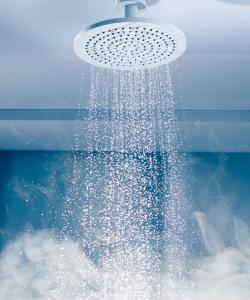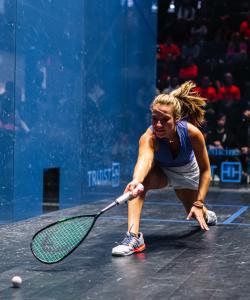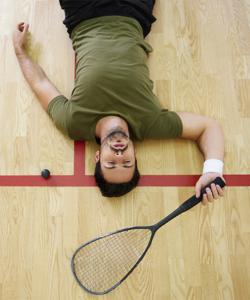Athletes have long recognized the importance of warming up before engaging in physical activity. Traditionally, warm-up routines have always involved more dynamic protocols, centered around movement, mobility exercises, and sport-specific drills.
However, advancements in sports science have confirmed the potential benefits of the concept of a ‘passive’ warm-up. In contrast to the conventional approach, passive warm-up techniques aim to prepare the body for intense activity without engaging in any significant active movements.
This blog delves into the benefits of passive warm-up protocols for squash players, shedding light on how they can optimise performance and help prevent injuries.
 Techniques and how it works
Techniques and how it works
A passive warm-up protocol can include techniques such as a short massage, targeted heat therapy, a 10-minute sit in the sauna, or warm water immersion in a bath or shower.
As with a more standard active warm-up, these methods effectively raise the body’s core temperature, leading to increased blood circulation and dilated blood vessels – as a result, more oxygen and nutrients are delivered to the muscles, improving their functionality and range of motion. With enhanced blood flow, the muscles become more pliable, reducing the risk of strains and sprains during subsequent physical activity.
Additionally, the increased muscle temperature promotes the optimal functioning of enzymes responsible for energy production, thus enhancing overall athletic performance.
 Improved mobility and flexibility
Improved mobility and flexibility
Passive warm-up protocols also contribute to improved mobility and flexibility within the joints. Warm water immersion through showers or baths for instance, can help to relax the connective tissues surrounding the joints, making them more supple and manoeuvrable. This in turn, allows for a greater range of motion during athletic movements. Having a warm shower BEFORE you play may seem very odd, but it’s actually an excellent way to relieve the joints and ease any residual stiffness.
Increases mental focus
A good warm-up prepares not only the body but also sets the stage for mental focus and concentration. Passive warm-up protocols in turn, provide athletes with valuable moments of relaxation and introspection before their performance. Techniques such as meditation, deep breathing exercises, or visualizations can help calm the mind, alleviate pre-competition nerves, and improve mental clarity – these mental exercises can be done within a sauna, a warm shower, or while having an energising massage. By reducing anxiety and increasing focus, passive warm-ups help lay the foundation for a more composed and effective performance.
 Helps to avoid fatigue
Helps to avoid fatigue
Particularly for older players with reduced physical reserves, or less experienced players who aren’t fully aware of their own limitations, engaging in an overly vigorous active warm-up routine can potentially lead to an unnecessary expenditure of energy, which may hinder performance during training sessions or competition. Passive warm-up protocols on the other hand, allow athletes to conserve energy while still preparing their bodies for the upcoming physical demands. By utilizing passive methods, athletes avoid unnecessary fatigue and save their energy reserves for the task at hand, ensuring peak performance during crucial moments. This is particularly important in sports like squash, which require rapid, repeated explosive bursts of energy.
Reduces the risk of injuries
Another particular benefit of passive warm-up protocols lays in the potential to help reduce the risk of injuries. By gently raising muscle temperature and promoting blood flow, passive warm-ups prime the body for physical activity without placing excessive stress on the muscles and joints. For those players with a history of joint pain or injury problems, introducing a passive element to your warm-up can be extremely beneficial.
Passive warm-ups have emerged as a valuable addition to the training routines of athletes across various sports disciplines, and are well worth incorporating into your pre-session squash routine. Bare in mind also that passive/active warm-up routines don’t have to be considered an either/or proposition – bringing in a short passive warm-up element before going into your main active warm-up routine can also be an excellent way to maximise results. Experiment with one, the other, and both, and see what works best for you.
Gary Nisbet
B.Sc.(Hons), CSCS, NSCA-CPT, Dip. FTST
SquashSkills Fitness & Performance Director
Sign up to the SquashSkills newsletter
Get world class coaching tips, straight to your inbox!